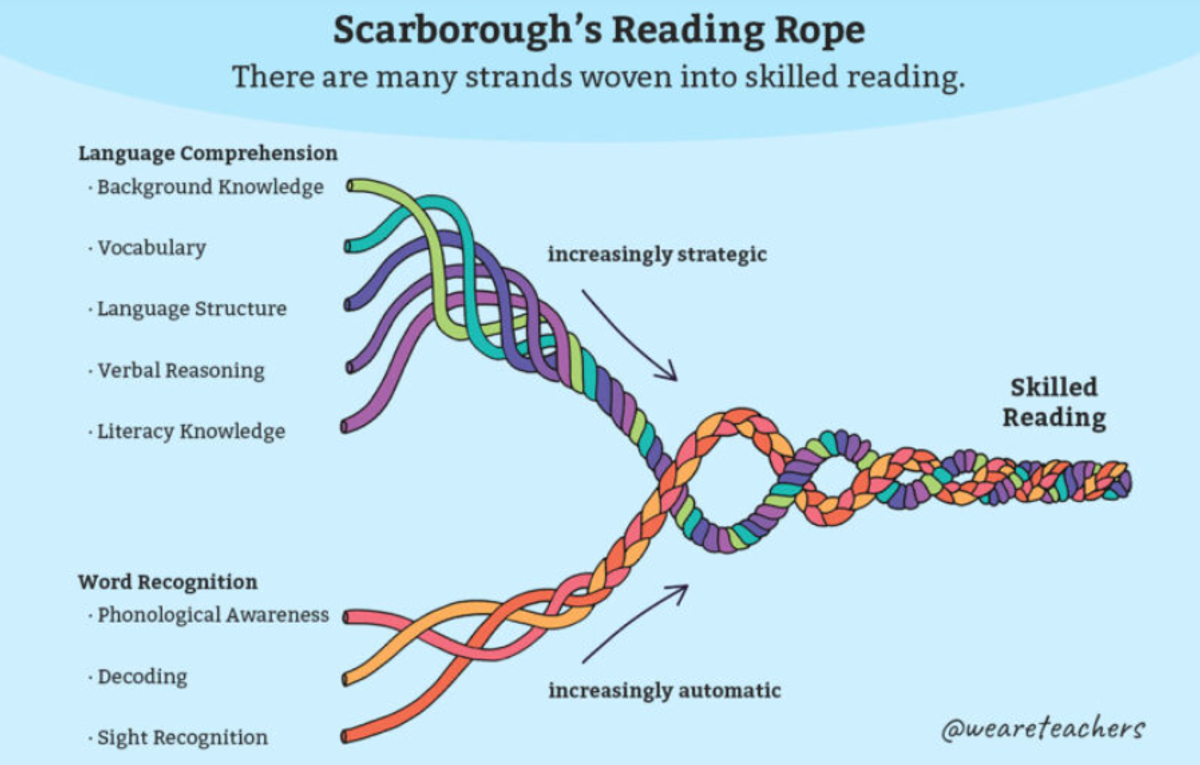Literacy and Numeracy News
BE INVOLVED, BE CONNECTED

Literacy and Numeracy News
BE INVOLVED, BE CONNECTED
LITERACY KNOWLEDGE
Through the newsletter, Johanne and I have unpacked the elements of Scarborough’s Reading Rope that contribute to skilled reading. This is our last article on the rope, as we examine the final section - Literacy Knowledge.
Literacy Knowledge is about understanding print concepts, genres and features and conventions of different text types. From the very beginning, when babies are chewing on the corners of a cardboard book, children start learning about print concepts. By the time students start primary school, they understand that books are read front to back, left to right and that they are made by authors and illustrators.
As students develop as readers they understand there are different purposes for texts, such as nonfiction and fiction, and before they can articulate it, find genres they love - such as adventure books or fantasy stories. Eventually they learn to understand the purpose, features, structures and language choices that contribute to different genres and how authors adapt writing for different audiences. Skilled readers continue to build on this knowledge as they recognise common tropes, archetypal characters, literary devices and how authors lean in and out of them to create engaging and meaningful texts.
Literacy knowledge provides frameworks for readers to think deeply about the texts they read. Understanding the structures, features and literary conventions expected in a text allows readers to focus on the new content knowledge they are gaining and provides them with a way to organise their thinking. For instance, reading a mystery novel, readers understand that there are clues and foreshadowing to look for, and that some loose elements of the novel need to be remembered, so that they can see how it all ties together at the end. Another example is reading an information book and recognising how the main paragraphs explain the heading, while diagrams, extra facts and definitions provide further details.
Building literacy knowledge requires reading a wide range of genres and paying attention to how they are similar and different to other books. Noticing signal words, text structures and how ideas are presented in the text, helps readers to understand the common features of different text types. Writing in different styles, also helps students to deepen their understanding as they apply what they have learnt about a range of texts.
At home, you can support your child by encouraging them to read, or reading to them, a wide range of texts. Read for authentic purposes, such as finding recipes, the joy of reading stories and information books about topics of high interest. Compare similarities and differences between and across genres, using examples from texts, movies and even video games. Model your thinking aloud, when you read or discuss texts - such as, ‘I was really nervous when he was fighting the giant spiders, but I knew the hero would have to find a way to win.’ Discuss how stories are made engaging, the choices authors make and whether they were expecting everything to happen in the text.
As we come to the end of our series on the Science of Reading, it is a timely reminder that to become skilled readers, there are many skills that need to be developed over the course of many years. However, almost all these skills can be supported, at all stages of a reader's development through rich discussions at home, where books are inquired into, discussed, shared, loved and celebrated!

